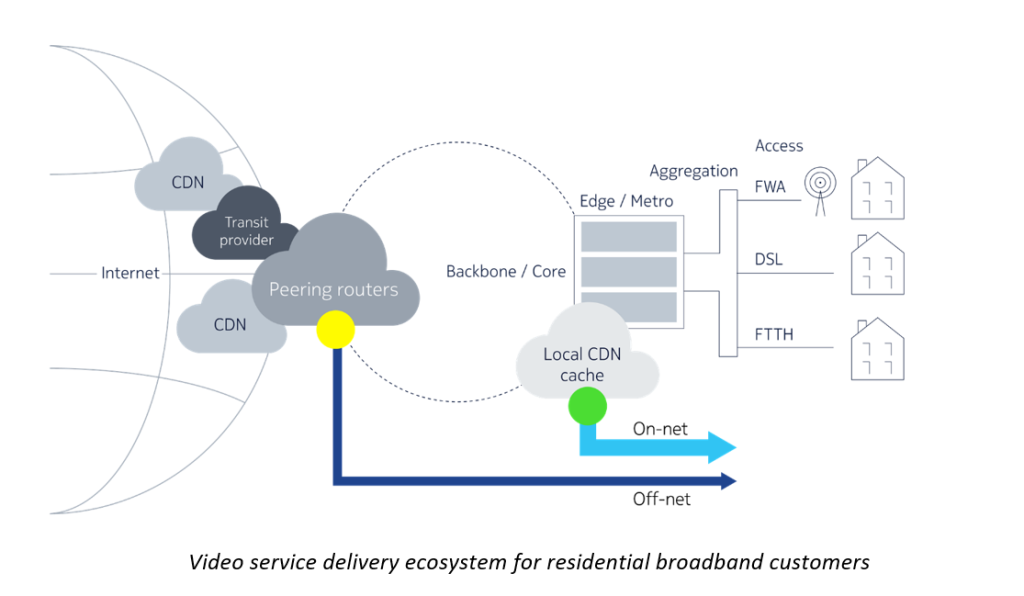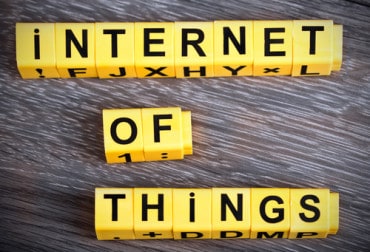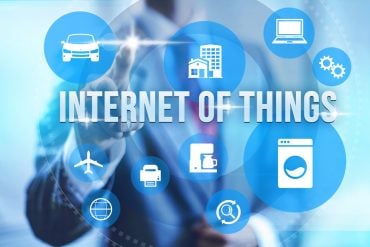
Service providers need better tools and insights to understand the relationship between their infrastructure, service delivery, and end-user quality of service.
Today, the internet is dominated by content platforms and content delivery networks, which are “shuffling” the rising volume and variety of content into service provider networks to get it closer to end-users for optimized delivery and improved experience. With most content now delivered from within service provider networks, many issues and terms such as net neutrality and “over-the-top” may need to be re-examined.
How the internet has changed since 2010
During the past decade, the internet — the global network of networks — simultaneously grew and shrank. How is that possible?
In terms of traffic volume, the internet grew massively. Yearly growth rates vary between different service provider networks, with typical growth rates in the range of 25-40% CAGR and with daily network traffic typically measured in petabytes.
That was before the COVID-19 pandemic hit. Since the beginning of the pandemic, the networks have experienced annual traffic growth in the range of 40-60%.
Part of the reason for this growth is our changed online behavior and greater reliance on broadband connectivity as our work, learning, and entertainment have shifted online.
Traffic growth is also fueled by the exponential growth in the number of devices connected to the internet, many of which have public IP addresses (both IPv4 and IPv6). Many connected devices are still using private IP addresses, hidden “behind” home routers using Network Address Translation (NAT). The rapidly depleting IPv4 address space is augmented with the IPv6 address space and will allow billions of new devices and systems to be added, including myriad internet of things (IoT) devices.
A decade ago, there were only a few connected devices per household — mainly laptops, mobile phones, and tablets. Over the last couple of years, the number of connected devices grew significantly. Some digitally-savvy consumers now have over 30 connected devices in their homes, including laptops, smartphones, games consoles, home automation sensors and controllers, smart speakers, internet-connected TV sets, and streaming devices. All these devices have access to more bandwidth than ever before.
So, how is then the internet getting smaller?
Looking at the number of traffic-originating domains, we notice a significant reduction. In 2009, half of the internet traffic on most service provider networks came from 150 originating domains. By 2019, that number was down to just five. By 2019, 90% of internet traffic in service provider networks was originating from fewer than 150 sources, and 50% of all internet traffic came from a small number of internet ASNs.
While the “top ten” sources of content-originating domains vary from network to network and from region to region, they are typically hyperscale giants — the largest providers of streaming video, online games, and cloud content.
See also: What Makes Cloud Observability Critical and Different?
The rise of hyperscale giants
The last decade also saw the incredible growth of these hyperscale companies. With the help of advanced network technologies such as 4G/LTE, cloud computing, and more sophisticated end-devices, hyperscale giants like Amazon, Apple, Facebook, Google, Microsoft, and Netflix found ways to expand their services to billions of people.
However, with the expansion of huge global subscriber bases, the hyperscalers began to have problems. Soaring demand for video, applications, and services meant that hosting hyperscale content in large, centralized cloud data centers, and delivering it over internet transit networks, became punitively expensive.
Also, the distance between data centers and end-users introduced latency and often affected the quality of service (QoS) for subscribers.
So, hyperscalers needed to get their content closer to consumers, and the solution came in the form of a new type of provider: the content delivery network (CDN). The past decade saw a massive upsurge in CDNs, from content generalists like Cloudflare and Akamai that deliver many different types of content to CDNs like Netflix’s Open Connect or Google’s GGC optimized for specific content types.
Initially, CDNs brought popular content closer to consumers by hosting close to major national and regional peering sites (internet exchanges or IXPs). Later, they brought it even closer by hosting it within the networks of individual service providers, which evolved their network architectures to incorporate these local (on-net) CDN caches.
See also: Content Delivery Networks Versus Edge Computing
Hyperscalers’ off-net is service providers’ on-net
Popular content continues to be brought closer to subscribers — with local edge- and metro-level CDN caches now being the norm. These local caches deliver ultra-high-definition video, gaming updates, mobile updates, and other services to growing numbers of subscribers; facilitating premium experiences.
In 2009, CDNs carried less than 25% of internet traffic. In 2019, however, they were delivering almost 90% of it. The internet effectively became a vast content delivery mechanism, dominated today by video, gaming, and videoconferencing traffic.
The ACM SIGCOMM 2021 best paper, “Seven years in the life of Hypergiants’ off-nets,” digs deep to show how thousands of hyperscale servers deployed inside service provider networks are changing the structure of the internet and the way services are delivered. The paper shows that the number of networks hosting hyperscale off-nets has tripled from 2013 to 2021: reaching 4,500 networks. While the largest platform companies dominate these deployments, almost all of these service provider networks are hosting within their own network at least one – and increasingly two or more – servers from Google, Netflix, Facebook, or Akamai.
Off-net extensions for these hypergiants are on-net servers and caches that are hosted within service provider networks. This provides fast access to internet content, services, and applications to a growing subscriber base.
Is it all roses for service providers?
In many ways, this expansion of hyperscalers’ content hosted closer to end-users has been a win-win-win: consumers gained high-bandwidth, low-latency, and ubiquitous access to content; hyperscale content providers amassed subscribers while minimizing transit costs; CDNs expanded their business; and communications service providers became providers of critical connectivity, as we have become dependent on omnipresent access to the internet.
Consumer demand for a great variety of content creates an opportunity for service providers to up their game, introduce value-added content bundles on top of basic connectivity plans and compete in providing the best end-user quality of experience.
As hyperscalers get closer to end-customers and obtain better control over how their content is performing, service providers do not get the same insights. For service providers, on-net caches and servers are largely big “black boxes” in their networks that provide premium content for their subscribers. But still, many service providers are left guessing when it comes to questions such as: How can I improve the performance of a new service? Can I optimize service delivery (even more)? What is my subscribers’ user experience?
As more services are being delivered from on-net third-party serving infrastructures, service providers need better tools and insights to understand the relationship between their infrastructure, service delivery, and end-user quality of service.
This is probably truer for video services than any other type of traffic.
Time to stop calling it “over the top”?
Video streaming from Netflix, YouTube, Amazon Prime, Hulu, Facebook, and other online video sources dominates the internet and service provider networks. Video represents more than 50% of the overall traffic in many networks today.
Streaming now extends during the day — with continued peak traffic into the evening, in so-called “prime time” hours.
However, video traffic grew not only by the increased time spent on streaming. During the pandemic, there was a significant increase in new “eyeballs.” In North America, for instance, between March and September 2020, there were more than 30% new video endpoints.
There are two main mechanisms for delivering streaming video to subscribers:
- On-net: most popular content is served from network-based content caches.
- Off-net: additional content is delivered from the internet, often over private peering links with the largest CDNs and video service providers. This traffic is of interest to network planning teams as there is a higher cost associated with peering/transit traffic.

Today, in many networks, more than two-thirds of all video content is delivered from on-net caches.
So, maybe it’s time to ditch the somehow derogatory term “over the top” (OTT) when talking about video services. Subscription video on demand (or streaming video on demand), aka SVOD, is a term that much better describes the world of Netflix, YouTube, Amazon Prime, Disney Plus, and many other video services today.
Service providers need better insights for SVOD and other OTT services
For service providers, it’s equally important to understand how their on-net and off-net mechanisms for delivery of video (and other services) are performing — and to do this for all video services running across their network.
This is not a task that can easily be done by gathering data from their network nodes because it entails:
- Accurately identifying streaming video traffic from all other traffic types.
- Identifying a particular video service (which, at times, is coming together with all other content belonging to a CDN.)
- Understanding how video streams – video-carrying IP flows – traverse through the network and impact network infrastructure.
- Quantifying and comparing streams belonging to different video services.
- Quantifying video performance and end-user experience.
Luckily, technology has evolved such that massive amounts of data can be obtained from the network in the form of network telemetry and processed by big data engines to provide great new insights to service providers.
Using big data network analytics with detailed internet context, service providers can obtain a holistic look at the internet service delivery chain, in this case, video, and gain powerful multi-dimensional insights that can help them to drill down to specific network perspectives: video service delivery insights from on-net caches vs. off-net across peering routers, number of video streams per video service and average streaming bit rates.
Additionally, with the right tools, these insights can be expanded to show video service consumption by access type or consumption by specific subscriber categories – from super-heavy users (using terabytes of bandwidth per month) to casual users, and to cover other types of services – not just video – to better understand which content and applications are used the most.
Better insights drive new monetization opportunities
As service providers gain more insight into how they deliver the content from their network and the internet to their subscribers, this knowledge creates an opportunity to move beyond basic connectivity and focus on the quality of service and customer experience as a way to win and retain subscribers.
All this information can help service providers increase the opportunities for further monetization:
- Offering special plans that include “premium” quality of video.
- Offering service bundles (which include a subscription to popular streaming video services.)
- Becoming an online video content provider and offer your video service.
- Improving their business partnerships with online video distributors – to improve their business.
Conclusion
The issues related to cost-optimized content delivery are top of mind for service providers as they are challenged to deliver content and services from many sources located within and outside of their network, with often limited visibility into all this traffic.
The new generation of big data network analytics can provide better network, service, and subscriber visibility and detailed, real-time insights to help service providers optimize their service delivery, improve customer experience and open new monetization opportunities.





























